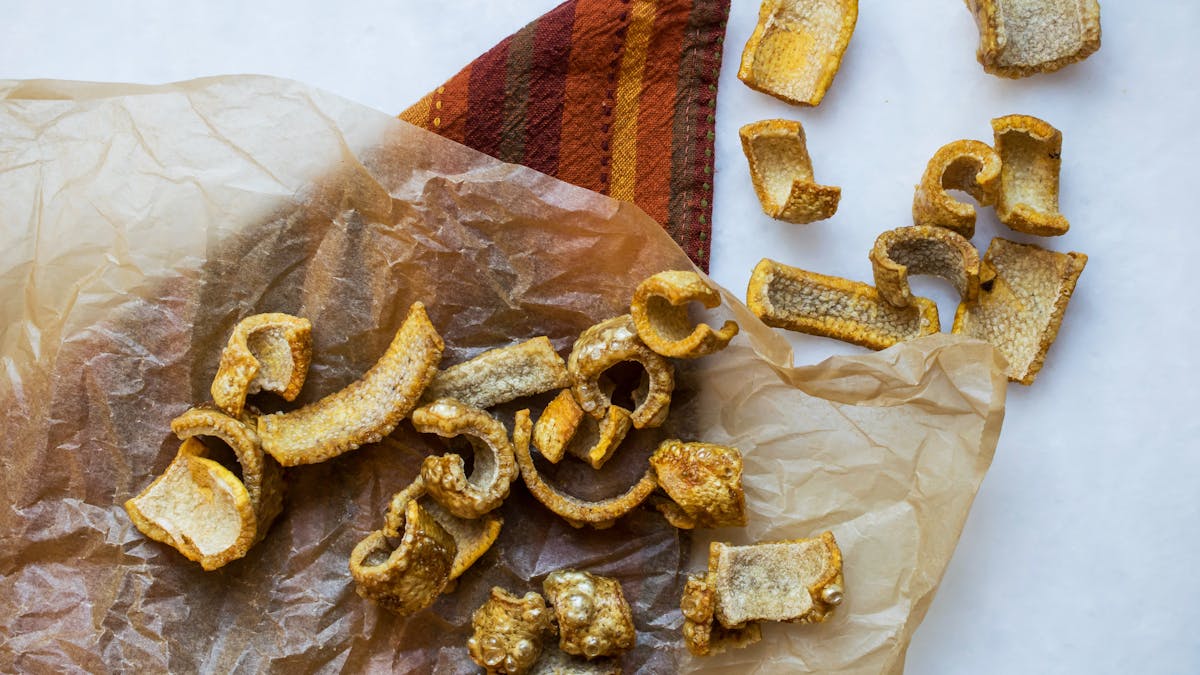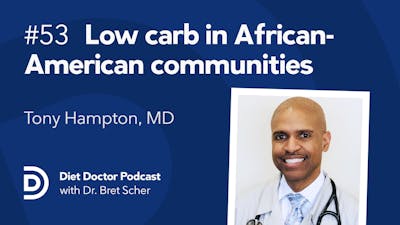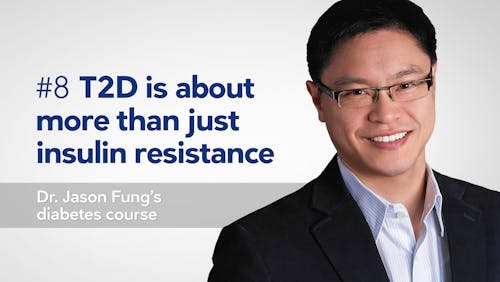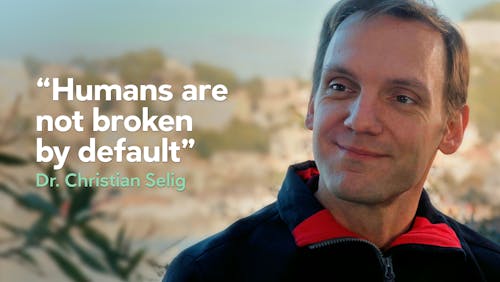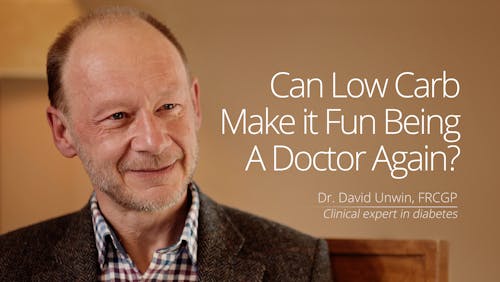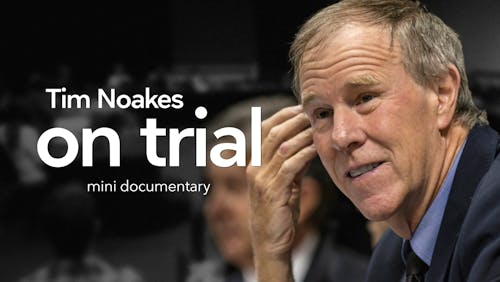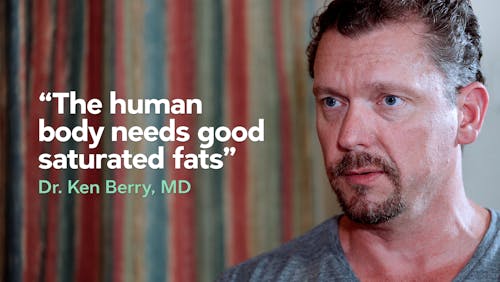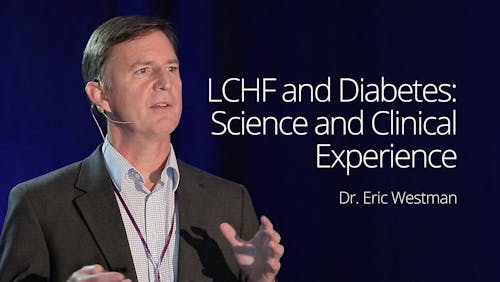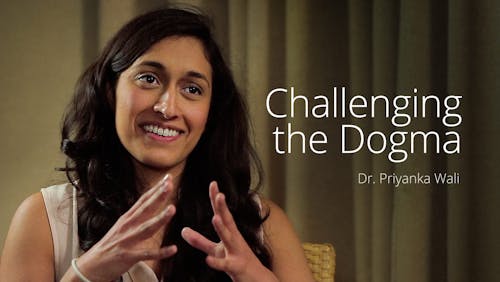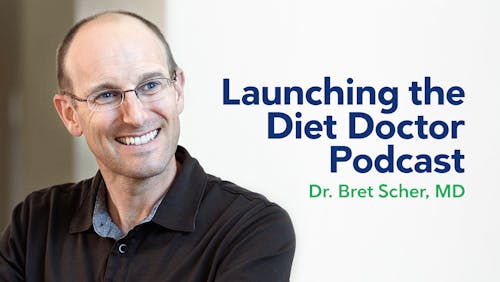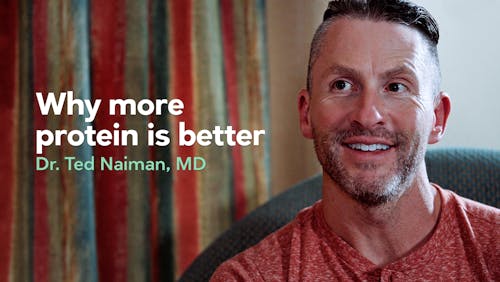Dr. Hampton: facing fears about fruit and fat

Dr. Tony Hampton is a family physician on the South Side of Chicago. He is writing a monthly column for Diet Doctor. This is his third column.
When my patients start a low-carb or keto diet, two fears commonly arise that may have them struggle to stick to their new eating plan. They both start with the letter “F.”
One is a fear of not eating fruit. The other is a longstanding fear of eating fat after years of eating low-fat diets. Their misplaced fears around the role of these two foods in a healthy low-carb diet can trip them up.
In fact, it’s common for patients not to know that, between fruit and fat, only one is essential in our diet for human functioning.
If I ask them which one, they always get it wrong. They’ll say fruit. Many are amazed when I tell them, ‘Nope, fruit you can live without.’
Instead, we simply have to eat some fat to get the essential fatty acids we need for the healthy functioning of our nerves, cell membranes, eyes, brain, and more.Let’s dig into these two foods to see where and why patients struggle. Doing so might also help you to see how your misconceptions, or even fears, could be holding you back from succeeding with keto or low-carb eating.
Let’s start with fruit
“But fruit has vitamins and fiber that I need!”
I hear that a lot. Many of my patients with diabetes or prediabetes eat a lot of fruit, believing it is a healthier choice for them. But the high amounts of sugar in fruit often contributes to their rising blood sugars.
Other patients may have normal blood sugars so far, but their fruit consumption adds to their cravings, weight struggles, or even a fatty liver.
When you are limiting carbs on a keto diet, you are trying to stay below 20 grams of net carbs a day. But eating just one piece of fruit can quickly use up all your carb allotment. One medium banana has 24 grams of net carbs. One apple, around 20 grams or more. Eating lots of fruit makes it impossible to keep low carb.
What about the vitamin C in fruit? You can blame persuasive advertising campaigns over the years for having most people believe oranges, and orange juice, are necessary and superior sources of vitamin C.
But did you know that, ounce-for-ounce, red and green peppers, broccoli, Brussels sprouts, cabbage, kale, and other cruciferous vegetables are just as good, or better, sources for vitamin C? Plus, these vegetables have as much or more fiber than fruit, and much less sugar or carbs.The sweetness of fruit is caused by two types of sugar molecules, glucose and fructose (aka fruit sugar.) Fructose can only be metabolized by the liver. High levels of fructose intake can contribute to fatty liver and to metabolic syndrome. That’s another reason to strictly limit fruit.
Finally, fruit can cause your insulin to rise sharply and then fall, which contributes to cravings and feelings of hunger. I find that fruit consumption for many of my patients actually triggers them to crave other high-carb foods.
Eating fruit may even make it difficult to stick to the diet because fruit keeps the cravings and hunger in place.To get off the insulin roller coaster, get rid of the high-sugar fruit. Within a few days, this will help reduce your desire for sweet tastes and diminish your cravings.
Most people doing the keto diet can tolerate, now and again, some low-carb fruit like raspberries, strawberries, and blueberries. But pay attention to whether eating even low-carb berries heightens your cravings for other sweet tastes. If they do, consider eliminating them — or only eat them as a special treat.
And remember, you can get all the vitamins, minerals, and fiber you need from eating low-carb vegetables — without the risk of derailing your progress.
Facing the fear of fat
A common stumbling block for my patients is actually eating enough fat to stay satiated and to get them adapted to burning their own fat for fuel.
When a patient comes back to me after starting a keto diet, I always ask them how it’s going. If they tell me they feel hungry all the time, it usually comes down to two related issues: They aren’t eating enough protein and/or enough fat. They are trying instead to eat low carb, low calorie, AND low fat. And in fact, they are starving their body of what it needs.
The fear of fat has been so ingrained in our culture over the past four decades, some patients actually have an aversion to fat. Some even say they are repulsed by it. Or they feel sick when they try to eat it.
Many are afraid that upping their fat intake will add to their weight struggles and clog their arteries.I have to explain that for most people that eating the right fat on a keto diet will see their heart risk factors and their cholesterol ratios improve. If they don’t believe me, I tell them we will closely follow these markers and see for ourselves. In fact, 95% of all my patients see heart health markers vastly improve.
How do I get people who fear or even hate fat to add it to their diet? I tell them to focus on getting good quality animal protein —and the natural fat that comes with it. And then, add to their vegetables what I call the BOCA fats: butter, olive oil, coconut oil, avocado oil. These are often the easiest to tolerate at first.
They don’t have to gorge on fat. They should just add a little bit more to their meals. Toss a salad with olive oil, melt butter over vegetables, or fry eggs in butter or coconut oil. All are options.Avocado oil can be too expensive for some. To get the goodness and fat of avocado, without the cost of the oil, just add slices of avocado to salads or to your dinner plate.
At first, it can be challenging for patients to go back to enjoying fat and using tallow and lard in their cooking as all our ancestors did.
Before long, however, they will relish the crispy skin on a roast chicken. They won’t be leaving it or the crispy fat on a steak or a pork chop on their plate.
Pork cracklings, or pork rinds, can be a great way to get back into the habit of enjoying a bit of fat. In fact, grated pork rinds make a great crispy coating in place of breadcrumbs. Diet Doctor has a great recipe to make your own pork cracklings, called chicharrones in Spanish.
Can you overdo it on fat? Yes, you can. Every once-and-a-while, a patient will come in stalled in their weight loss. When we look at what they are eating, they are gorging on fat. They are having bulletproof coffee (with butter and oil), fat bombs, too many pork rind snacks, whipping cream, or nuts and cheese.
Once you are fat-adapted and can easily burn your own fat for energy, cutting back on the fat you are eating can help you access and burn your own fat stores for energy. We all have ample stores on our backsides, even the skinniest among us!
But, if at any time you are feeling really hungry between meals, cold or tired on the keto diet, take a look at whether you are eating enough protein and fat.The great thing about fat is that, if you are not doing fat bombs, bullet-proof coffee, or high-fat snacks, it is hard to overeat the fat that comes with good protein or whole food meals. You just naturally feel full and satisfied.
Some patients ask whether they need to avoid seed and vegetable oils like corn oil, canola oil, sunflower oil, etc. Diet Doctor has an insightful evidence-based guide on this controversial topic.
I tell my patients that, starting out, they don’t need to worry too much about vegetable oils, especially if they are cutting out processed foods. I just want them to begin by cutting the carbs and eating whole foods.
But over time, many find that as they concentrate on minimally processed foods, they naturally gravitate to the fats and oils that are the least processed, such as the BOCA fats.
I hope this exploration of the two “F” fears, fruit and fat, help you find ways to tweak your low-carb keto diet for maximum success.
My next column will examine how that last year of stressful times for so many patients has contributed to their dietary struggles. Nutrition is important, but stress can undermine our best intentions.
My N.E.S.T acronym stands for nutrition, exercise, stress/sleep, and thoughts/trauma. I think it’s time that we talk about dealing with stress. This year, dealing with stress has been more important than the E (exercise) of NEST — although exercise is one of the great stress relievers.
Watch for that column in the first week of February.
Until next time, remember to always protect your NEST.
